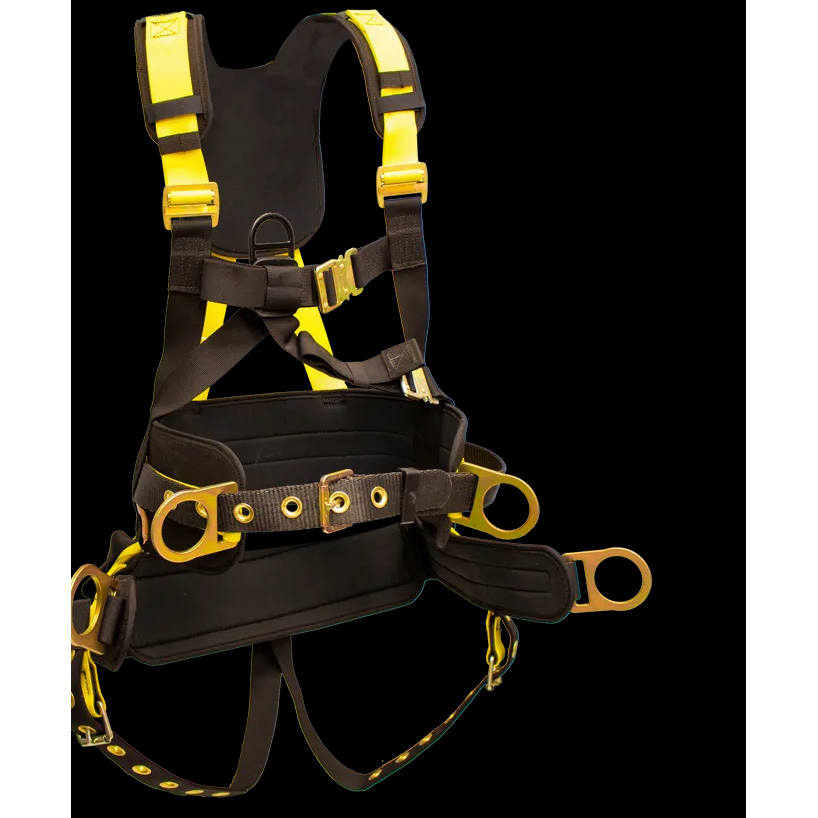Suspension or rigging harnesses are specifically designed for workers who perform tasks while suspended in the air, such as window washers, scaffold builders, or theatrical riggers. Here's a quick overview of why they are different from other types of harnesses:
-
Attachment Points: Suspension harnesses feature multiple attachment points strategically located to allow the worker to be suspended in a comfortable and stable position. These attachment points are typically located on the dorsal (back), chest, waist, and hips to distribute the load evenly and provide support during suspension.
-
Adjustability: Suspension harnesses offer a high level of adjustability to accommodate different body sizes and shapes. They often feature adjustable straps on the shoulders, chest, waist, and legs, allowing for a customized fit that ensures comfort and safety while suspended.
-
Comfort and Support: Since workers may spend extended periods suspended in these harnesses, comfort and support are paramount. Suspension harnesses are often equipped with padding at pressure points, breathable materials to prevent overheating, and ergonomic designs to minimize fatigue during prolonged use.
-
Specialized Features: Suspension harnesses may include specialized features to enhance safety and functionality for specific tasks. For example, they may have tool loops or gear attachment points for carrying equipment while suspended, as well as quick-connect buckles for easy donning and doffing.
-
Fall Arrest vs. Work Positioning: While some suspension harnesses are designed primarily for fall arrest protection, others are intended for work positioning or restraint. Fall arrest harnesses are equipped with features such as dorsal attachment points and energy-absorbing lanyards to protect against falls, while work positioning harnesses prioritize stability and comfort during work tasks.
-
Certification and Training: Proper training and certification are essential for workers using suspension harnesses to ensure they understand how to use the equipment safely and effectively. Training may cover topics such as harness inspection, proper fitting, suspension techniques, and emergency procedures.
In summary, suspension or rigging harnesses are designed specifically for workers who perform tasks while suspended in the air. They offer multiple attachment points, adjustability, comfort, specialized features, and may be designed for fall arrest protection or work positioning, depending on the specific needs of the job. Proper training and certification are crucial to ensure the safe use of suspension harnesses in various work environments










